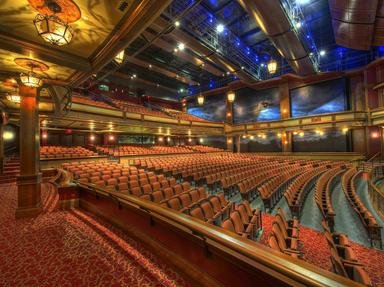Quiz Answer Key and Fun Facts
1. Although Victor Herbert was a leading light of the American musical stage, he wasn't born in the United States. Where was he born?
2. Mistaken identity was a familiar plot device in Gilded Age operetta. Which Victor Herbert work features three major characters portrayed by the same performer?
3. Despite his success on Broadway, no new stage works by Victor Herbert premiered between 1900 and 1903. Why the hiatus?
4. After a three-year hiatus, Victor Herbert returned to the Broadway stage. Which operetta premiered on October 13, 1903?
5. Victor Herbert hired opera star Fritzi Scheff to appear in his musicals for the then-staggering salary of $1,000 a week. During a curtain call for the operetta "Babette", Miss Scheff kissed Victor Herbert on the cheek - oh my! He wrote a song about it, just for her. What was it?
6. Which Victor Herbert operetta features a menagerie of songs entitled, "The Nightingale and the Star", "When the Cat's Away the Mice Will Play" and "Love Me, Love My Dog"?
7. "The Streets of New York" ... "In Old New York, in Old New York, the peach crop's always fine ..." Which show featured this paean to Victor Herbert's adopted home - but was set in a place far from Broadway?
8. In 1914, Victor Herbert teamed with John Philip Sousa and Irving Berlin - but not to write music. What organization did they help to found?
9. "Ah! Sweet Mystery of Life" - the song's real title is "The Dream Melody". "Tramp Tramp Tramp (Along the Highway)" is just "Tramp Tramp Tramp". Which Victor Herbert operetta features these two standards?
10. Sometimes the magic fails. Flo Ziegfeld presents! Songs by Victor Herbert and Jerome Kern. Lyrics by P.G. Wodehouse. Irene Castle danced; Lew Fields cracked wise; Marion Davies looked gorgeous. Young George Gershwin conducted the orchestra and played the piano for rehearsals; brother Ira hung around too. Can't miss, right? It lost money and closed after six weeks.
Source: Author
ignotus999
This quiz was reviewed by FunTrivia editor
LadyCaitriona before going online.
Any errors found in FunTrivia content are routinely corrected through our feedback system.

